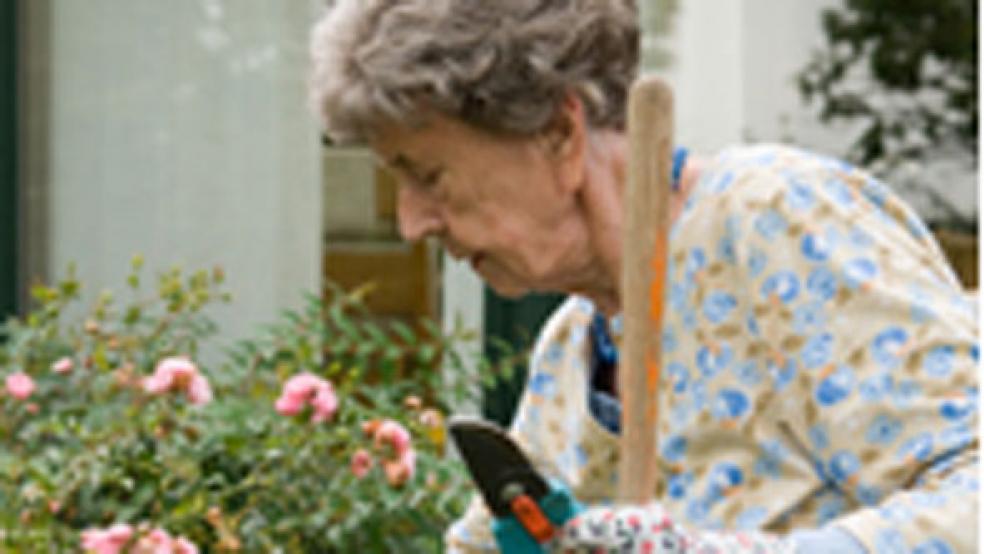The swelling ranks of Americans 65 and older — a figure expected to more than double to 89 million by 2050 — have inspired communities and companies to find innovative ways to help older Americans work longer and age gracefully and affordably in their homes.
The small but fast-growing “village” movement — where seniors help seniors to coordinate and deliver services within their communities — is a grass-roots response to the well-documented preference of older people to remain in their homes as they age. There are many different models for this approach, but one of the most venerable is Boston’s Beacon Hill Village, which was created by a group of long-time residents in 2001. Now there are more than 50 such villages nationwide, and more than 600 in development. Experts believe some type of village model could help fill the growing need for affordable housing and services for our rapidly aging population.
It Takes a Village
“People who join Villages are planners,” notes Elinor Ginzler, senior vice president for livable communities at AARP. “The notion of either delaying or avoiding institutional care is exactly why these folks joined.”
Aging-in-place systems are cost-effective. Consider this: The median monthly cost for nursing home care in 2009 was $5,243 — more than five times that for seniors living at home, according a study published in the 2010 issue of Health Affairs.
health problems … costing employers $13.4 billion annually.”
With the need for long-term care expected to double between 2000 and 2040, these models can postpone the need for institutional care and cut significant costs for individuals as well as government programs like Medicare and Medicaid.
Businesses Step Up
Businesses, too, are stepping up to confront the parallel challenge of a rapidly aging population: how to support workers juggling fulltime jobs with their duties as caretakers of elderly relatives. According to a study by the National Alliance for Caregiving and AARP, an estimated 21 percent of all U.S. households are providing care for an adult family member. Increasingly, employers see the toll that takes on their own employees’ health and productivity.
As the MetLife Study of Working Caregivers and Employer Health Care Costs reports, workers caring for an older relative are more likely to report health problems like depression, diabetes, hypertension or heart disease — costing employers $13.4 billion annually.
Here are some of the most creative and cost-effective solutions citizens and companies are developing:
The Village Solution
The concept is simple: Networks of neighborhood-based seniors join together to make independent living possible — from transportation to home repairs. However, the villages themselves vary markedly in approach and organization. “If you’ve seen one Village, you’ve seen one Village,” quips Candace Baldwin, senior policy adviser at NCB Capital Impact, an Arlington, Va.-based nonprofit that has created an informal association of these groups called the Village to Village Network.
Some charge hundreds of dollars in annual dues and have paid staff; others charge little or nothing. Beacon Hill, which currently has 430 members, charges $640 for an individual and $890 for a household, with discounts for low-income participants. It also fills about 25 percent of its requests with volunteers. Others like Capitol Hill in Washington, D.C., fill about 85 percent of theirs with volunteers.
But all build on a foundation of neighborhood-based, like-minded senior, determined to remain in their homes. As of now, most are opening in more upscale communities, though all provide discounts for lower-income elderly.
The Caring Collaborative
“Voluntary communities are the greatest untapped resource for helping people to cope as they age,” asserts Charlotte Frank, the 75-year-old former government service executive who with friends brainstormed the Caring Collaborative back in 2006, when complications after cancer surgery led her to rely on friends who helped out without being asked. Members of the Transition Network, an organization geared to professional women over 50, pay $50 to join the Caring Collaborative.
says Frank. “We sent out an e-mail … The response was overwhelming.”
“One of our members got smacked by a car as she was crossing the street,” says Frank. “We sent out an e-mail, asking for visits to her. The response was overwhelming, exactly what we had hoped the CC would be. It augments the medical system, which will never provide this kind of care, the care that helps you live and recover.”
Support Systems at Work
Employees who must juggle full-time jobs with caregiving duties face a daunting array of challenges, never more so than when the role involves the end of life. “End-of-life issues are a workplace issue because they’re impacting the workforce, and productivity, right now,” says Pitney Bowes medical director Brent Pawlecki. The company’s own survey of its employees found that one in five were considering leaving because of caregiving duties. “That’s a lot of talent and knowledge that’s walking out the door,” he says.
Like other large companies, Pitney Bowes offers a panoply of support services to its 22,000 U.S. employees, including flexible work arrangements, caregiver support groups, online tutorials for end-of-life legal issues, and counseling on hospice and palliative care. Along with General Electric, PepsiCo and IBM, Pitney Bowes is working with The National Business Group on Health to design an end-of-life toolkit for employers that will offer guidance for employees who are giving care to someone with a terminal illness. (The end-of-life toolkit will not be available to the public, but the Organization of National Hospice and Palliative Care has put together a useful workbook covering the same issues.)
“We want people to try to take control of their own health issues, and end-of-life planning is part of that,” notes Pawlecki. “It best fits within the wellness program. It’s a normal part of life, so let’s treat it that way.”




